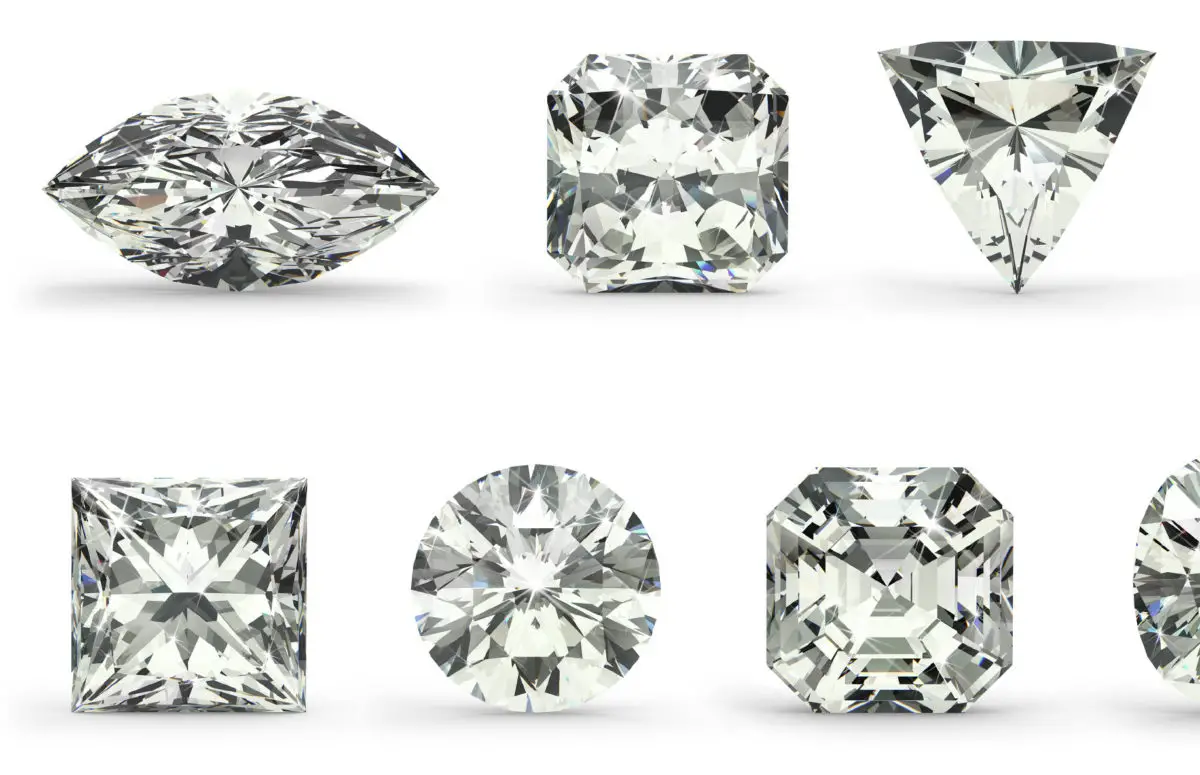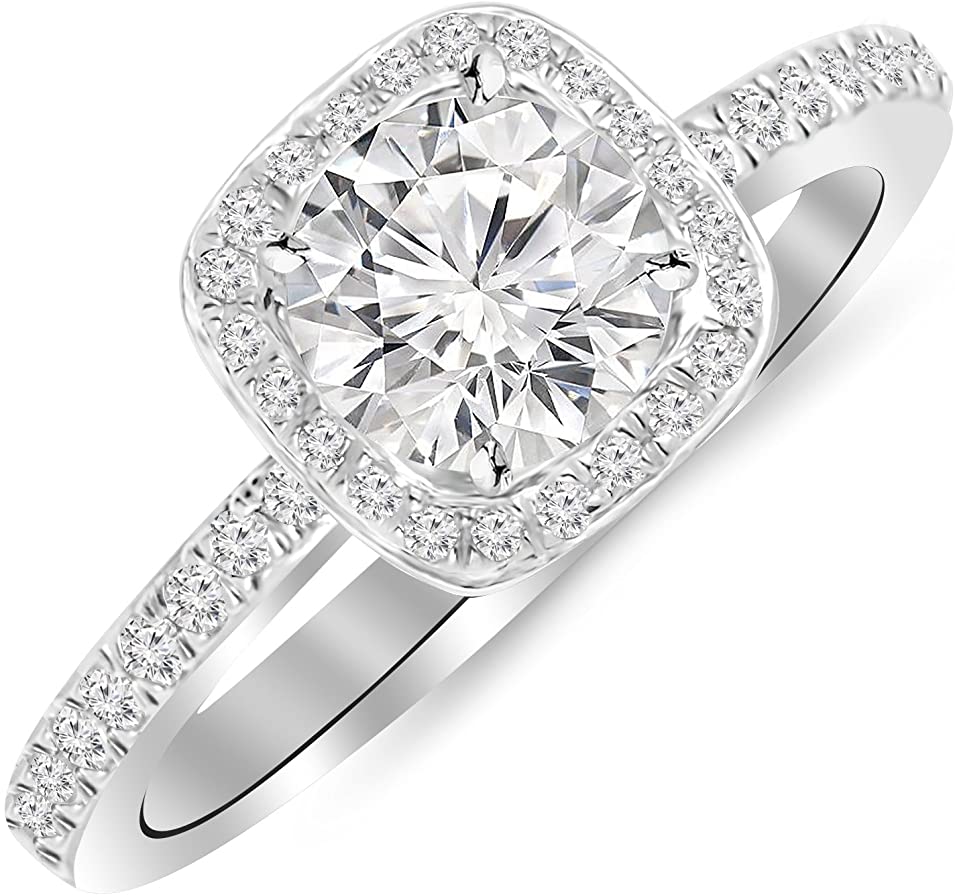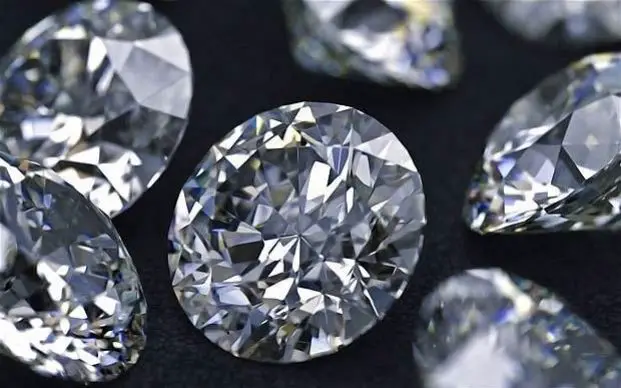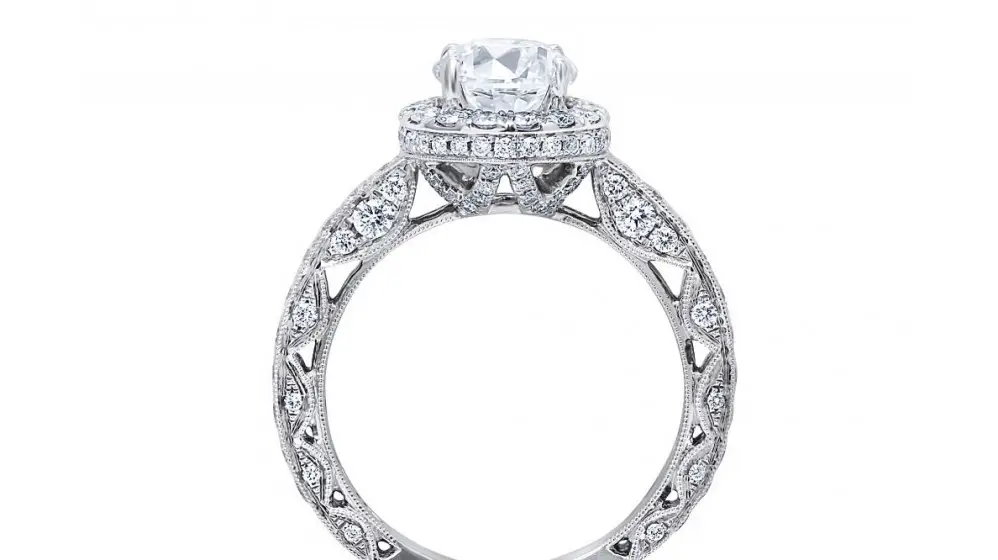What Are Diamond Blemishes?
We have all heard that no two diamonds are alike. Most diamonds have internal and external flaws that make them unique.
Diamond blemishes are flaws on a diamond’s surface. There are many different types of blemishes. Some blemishes can weaken a diamond’s beauty and structure. Depending on the type of blemish, it may not be visible to the naked eye.
We’ll teach you everything about diamond blemishes. Learn how blemishes form, their different types, and how they influence prices.
What is the difference between inclusions and blemishes?
An imperfection in the diamond is known as an inclusion. Depending on where the flaw is, it will either be an inclusion or blemish. An inclusion is a flaw inside of the diamond. A blemish is an imperfection on the surface of the diamond.
Many inclusions and blemishes are only seen under 10x magnification. Diamonds without visible inclusions are eye-clean diamonds. A diamond with many inclusions will look dull and lifeless.
How do diamond blemishes form?
Blemishes and internal inclusions form differently. A blemish occurs after the rough diamond is formed. Blemishes can result from poor care when the diamond is cut and set. They can also form because of daily wear and improper storage.
- Naturally
- Poor care of a diamond
- Daily wear and tear
Internal inclusions result from the diamond’s formation process. As the diamond forms, substances can become trapped and create inclusions. Internal inclusions can also form because of irregular growth.
Types of diamond blemishes
There are several types of diamond blemishes:
Abrasion: Small nicks along the diamond’s facets that can make the edges fuzzy. Abrasions can occur when diamonds rub together.
Burn Mark: Results from too much heat coming off the diamond polishing wheel. Burns create hazy areas.
Extra Facets: They are extra facets added to diamonds, typically on found on the girdle. They are often added to remove a minor imperfection. Extra facets do not impact the clarity grade.
Lizard Skin: A bumpy area on the diamond’s surface.
Natural: A rough part of the diamond that was not polished. Naturals are commonly found on or near the girdle.
Nick: A small chip caused by impact from daily wear. Commonly found on the culet or girdle.
Pit: A small opening that looks like a white dot. Pits result from pinpoint inclusions that were extracted during the polishing process.
Polish Lines: Thin or transparent parallel grooves from the polishing process.
Rough Girdle: An irregular girdle surface. A rough girdle can mean a weak diamond.
Scratch: A thin white line across the diamond’s surface.
Surface Graining: Milky colored streaks on the diamond’s surface.
How do blemishes influence clarity grades?
The quantity of blemishes a diamond has will influence its clarity grade. Clarity is one of the 4C’s of diamond grading. These diamond grades help people understand and buy diamonds. Clarity is graded on a scale from Flawless for no flaws to I3 for many flaws:
- Flawless (FL): No inclusions.
- Internally Flawless (IF): No internal inclusions.
- Very, Very Slightly Included (VVS1 and VVS2): Small inclusions difficult to see with 10x magnification.
- Very Slightly Included (VS1 and VS2): Minor inclusions seen with 10x magnification.
- Slightly Included (SI1 and SI2): Noticeable inclusions with 10x magnification.
- Included (I1, I2, and I3): Inclusions are easily seen with 10x magnification.
Most diamonds have inclusions, making flawless and internally flawless diamonds rare.
How are diamond blemishes priced?
Diamonds with many inclusions, like an I1, are cheaper than less included diamonds. Diamonds can still be beautiful with blemishes. Depending on the type of blemish and location, it may not detract from the diamond’s appearance.
For larger budgets and bigger diamonds, we recommend buying a VS1 or VS2 diamond. You will not be able to see the diamond’s imperfections during wear.
For smaller diamonds and tighter budgets, we recommend buying VS2, SI1, or SI2 diamonds. Imperfections will be harder to see on these diamonds with the naked eye.
Moving one clarity grade can be the difference of hundreds of dollars. This minor change will have no visible difference.
Let’s compare two similar diamonds from James Allen. Both diamonds are round, 1 carat, H color, and Excellent cut:
- The first diamond has a VS2 color grade and sells for $4,130.
- The second diamond has a VS1 color grade and sells for $4,750.
That is a difference of $620! With a clarity grade change that minor, you will not be able to tell the difference. With the money saved, you may decide to get a bigger diamond.
Tips for buying diamonds with blemishes
As you shop, keep these diamond tips in mind:
- You do not need to buy an expensive diamond without any blemishes.
- Use websites like JamesAllen.com to compare diamond grades and prices.
- Shopping for VS1 and VS2 diamonds are a safe choice.
- See the diamond in person or pictures of it to understand its flaws.
We are here to help make buying beautiful and affordable diamonds simple. With these tips, you will soon find a brilliant diamond at a great price.





